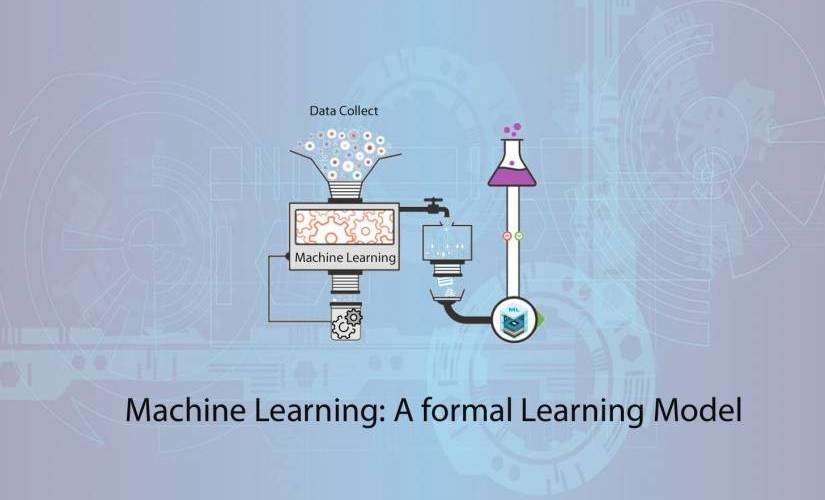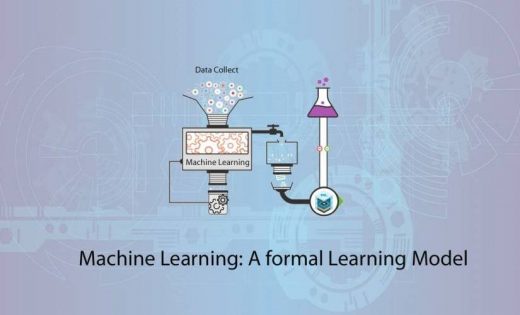Machine Learning: A Formal Learning Model
Machine Learning: A Formal Learning Model

In day to day life, individuals are effectively confronting a few choices to make. For a machine to settle on these sorts of decisions, the automatic route is to show the issues faced in a numerical articulation. The mathematical articulation could legitimately be structured from the issue foundation. Machine learning is a formal learning model.
There are commonly three kinds of Machine Learning that are dependent on continuous issues. These are also based on an informational index.
For example, a candy machine could utilize the gauges and security enrichment of cash to distinguish false payment. When using a different issue, you might merely obtain a few estimations about the criteria or security of money. Maybe you will put your machine learning to comparing names with the enrichment of cash.
However, you will quickly find that you don’t have the foggiest idea about the particular relationship among many of the elements of machine learning you are trying to employ. But, the machine learning itself — will be a superior method to locate the primary associations between parts that you are trying to capitalize on for your business.
The three kinds of Machine Learning dependent on continuous issues are also based on an informational index. These indexes are included in the following:
-
Supervised learning:
The preparation sets given for regulated learning is the named dataset. Managed learning attempts to discover the connections between the list of capabilities and the name set. Which is the information and properties we can gain from a marked dataset. On the off chance that each component vector x is comparing to a mark 1 2, {…} c y l (c is generally run from 2 to a hundred), the learning issue is meant as a grouping.
Then again, if each component vector x is comparable to a genuine worthy R, the learning issue is characterized as a relapse issue. The information extricated from regulated learning is frequently used for expectation and acknowledgment.
-
Unsupervised learning:
The preparation sets given for unaided inclining is the unlabeled dataset likewise characterized. Unaided learning targets grouping, likelihood thickness estimation, discovering relationships among highlights, and dimensional decrease.
All in all, an unaided calculation may all the while adapt more than one properties recorded above, and the outcomes from solo learning could be additionally utilized for managed learning. Unsupervised learning is also used when you are learning on your own or learning privately.
-
Reinforcement learning:
Reinforcement learning is utilized to take care of issues of essential leadership (more often than not, an arrangement of choices, for example, robot observation and development, programmed chess player, and programmed vehicle driving.
The Strategies of Supervised Learning
There are commonly two methodologies of classifiers for supervised learning. The one-shot (discriminant), and the two-organize (probabilistic) techniques. The one-shot (discriminant) methodology targets were founded a capacity that legitimately maps the component vector to the name.
The name is typically advanced through the possibility of ERM and its approximated adaptations. Then again, the two-arrange technique abuses probabilistic strategies and can be additionally isolated into two gatherings, the discriminative and generative models.
The discriminative model attempts to show the classifier as a restrictive likelihood conveyance (CPD) given the component vector. While the generative model uses an all-inclusive variant, demonstrating the classifier as a few CPDs given each mark just as an earlier likelihood appropriation of names.
We are eager to locate the model which could remove significant information, maintains a strategic distance from over-fitting and under-fitting, and results in the best learning presentation for the progressing issue. In advance of model choice, we have to realize how to accomplish various models just as various model complexities. There are commonly three techniques to arrive at this objective:
-
Speculation set sorts and target capacities (Type I): Different theory set kinds (ex. KNN, choice trees, and direct classifiers) bring about various models. Besides, even in a similar class, for example, direct classifiers, diverse target capacities (ex. square blunder and pivot misfortune) think of various learning exhibitions.
-
Model parameter (Type II): Even under a similar speculation set sort and target work. There are still some free parameters to modify the theory set. For instance, in KNN (K-closest neighbors), various choices of K may bring about numerous learning exhibitions. The utilization of SVM and multi-layer perceptron additionally expects clients to set a few parameters before execution. For the most part, these parameters have associations with model intricacy and VC d.
-
Highlight change (Type III): The last, however, not the least, changing the dimensions of highlight vectors will bring about various VC d of the model. There are a lot of strategies to improve the component vector dimensional, and premise capacities define the general structure.
Model Selection
Model choice is performed to locate the best model which could extricate significant information, keeps away from over-fitting and under-fitting, and results in the best learning exhibition for the progressing issue.
Regularization: Regularization is performed to adjust Em (g) in and model intricacy.
Approval: rather than regularization, approval selects a model from various theory sets and distinctive target capacities. We can see speculation set with multiple model parameters as different models gain approval.
Three Learning Principles
From the past two subsections, how to create a few models and select the best one among them are examined, and in this subsection, three rules that the AI clients should remember to forestall lackluster showing are presented:
Occam’s razor: The least complicated model that fits the information is additionally the most conceivable, which means if two models could accomplish the equivalent anticipated Em (g) in, then the more straightforward one is the reasonable model.
Testing predisposition: If the examining information is inspected in a one-sided way, at that point, learning will create a partial comparative result. For instance, if an assessment of “how the Internet influences your life?” is performed on-line, the actual outcome has a hazard to over-gauge the integrity of the Internet since individuals who don’t care to utilize the Internet are probably going to miss this test.
Information snooping: If an informational collection has influenced any progression in the learning procedure, the survey results can’t be entirely relied on.
The post Machine Learning: A Formal Learning Model appeared first on ReadWrite.
(28)


